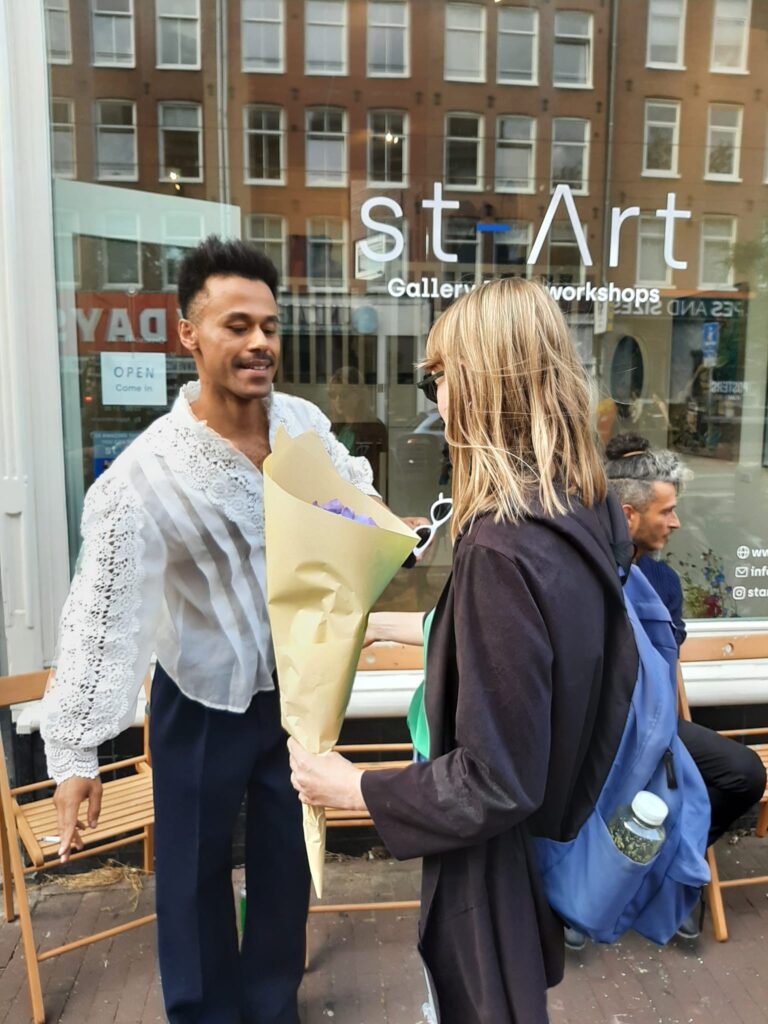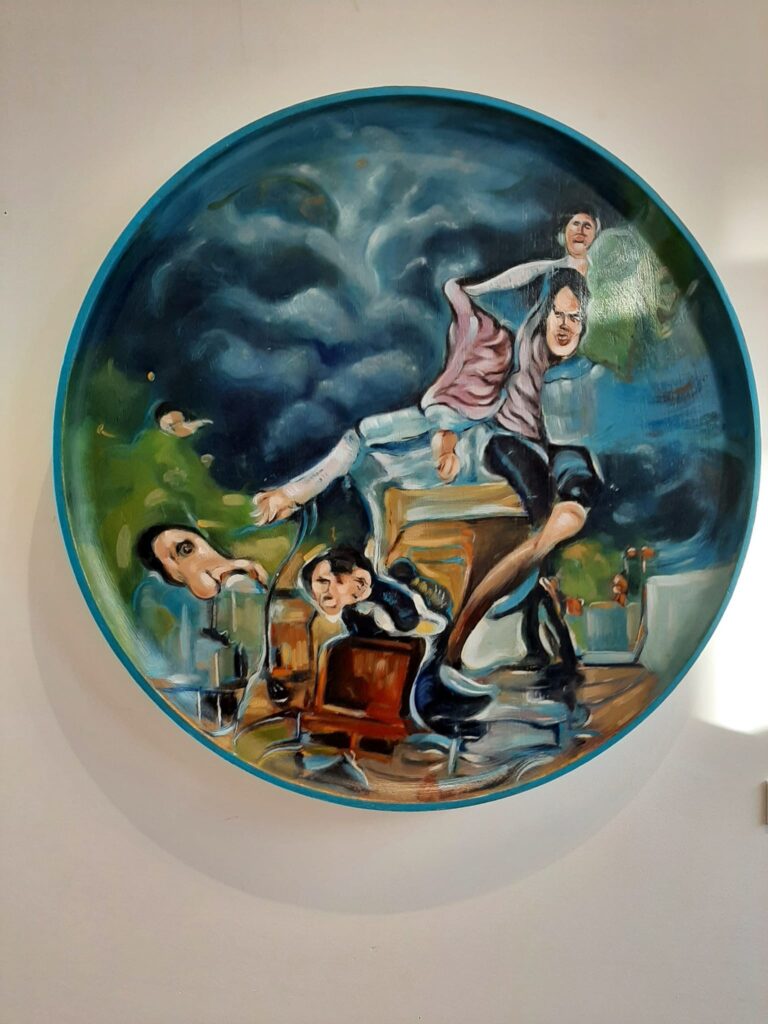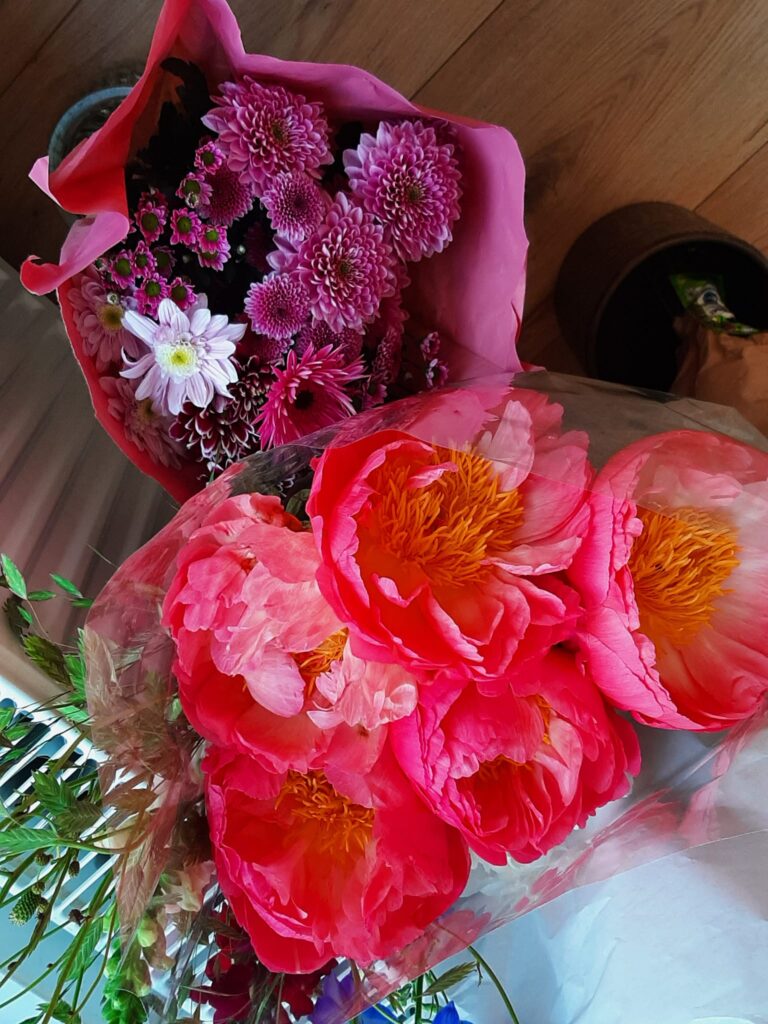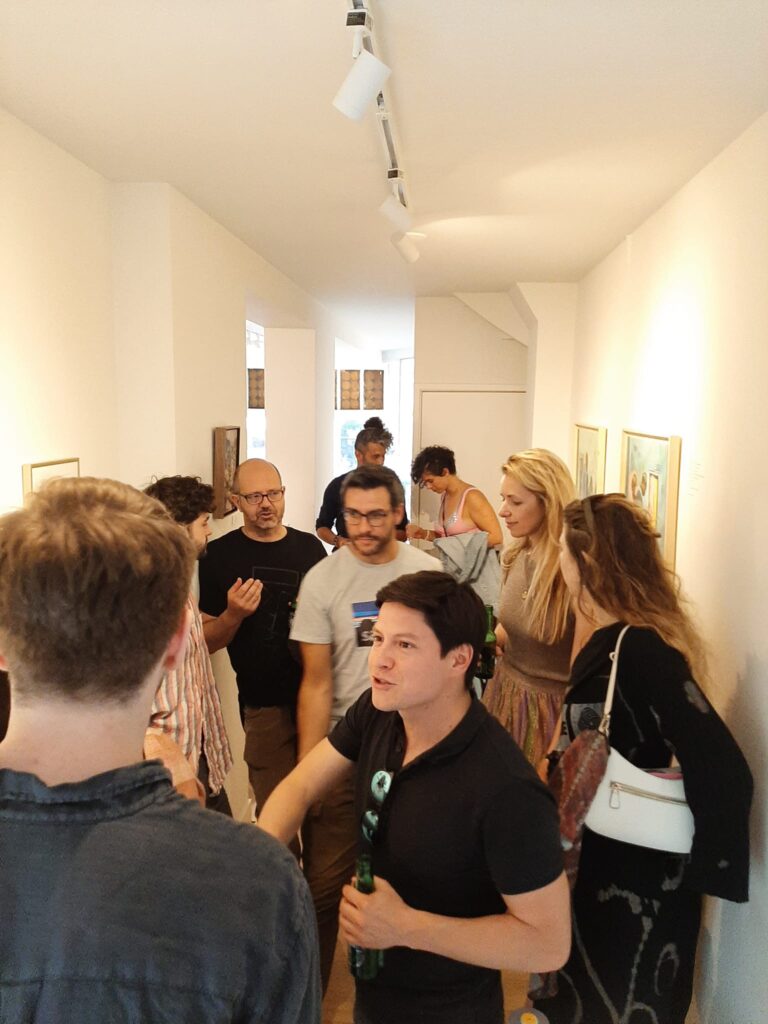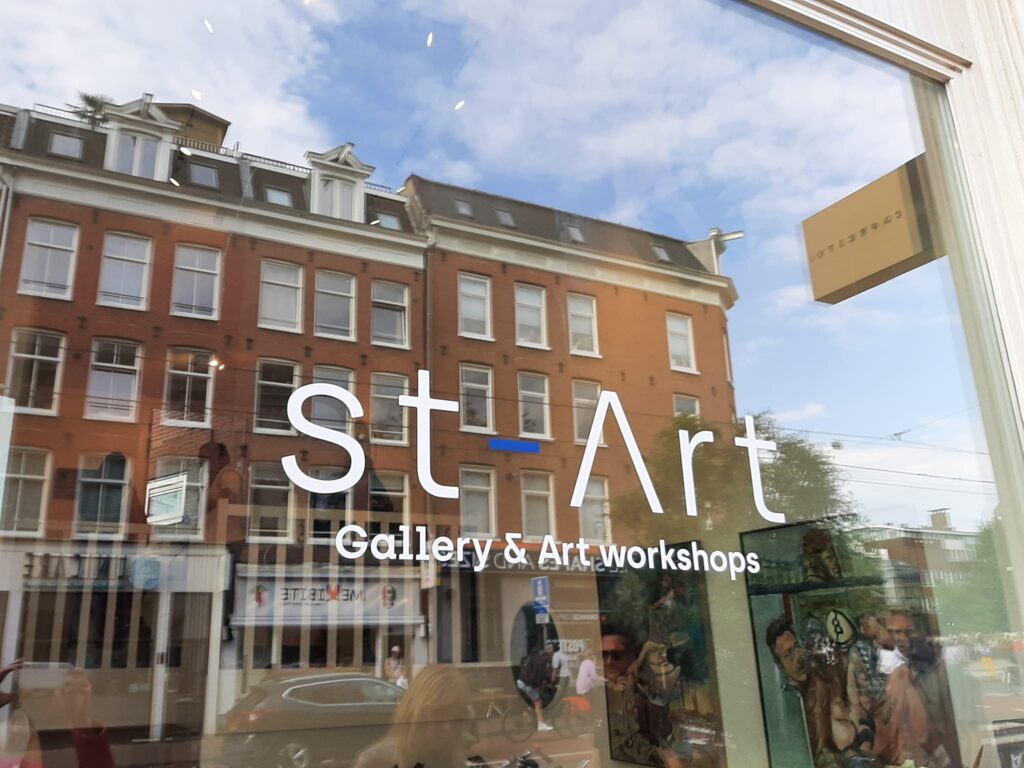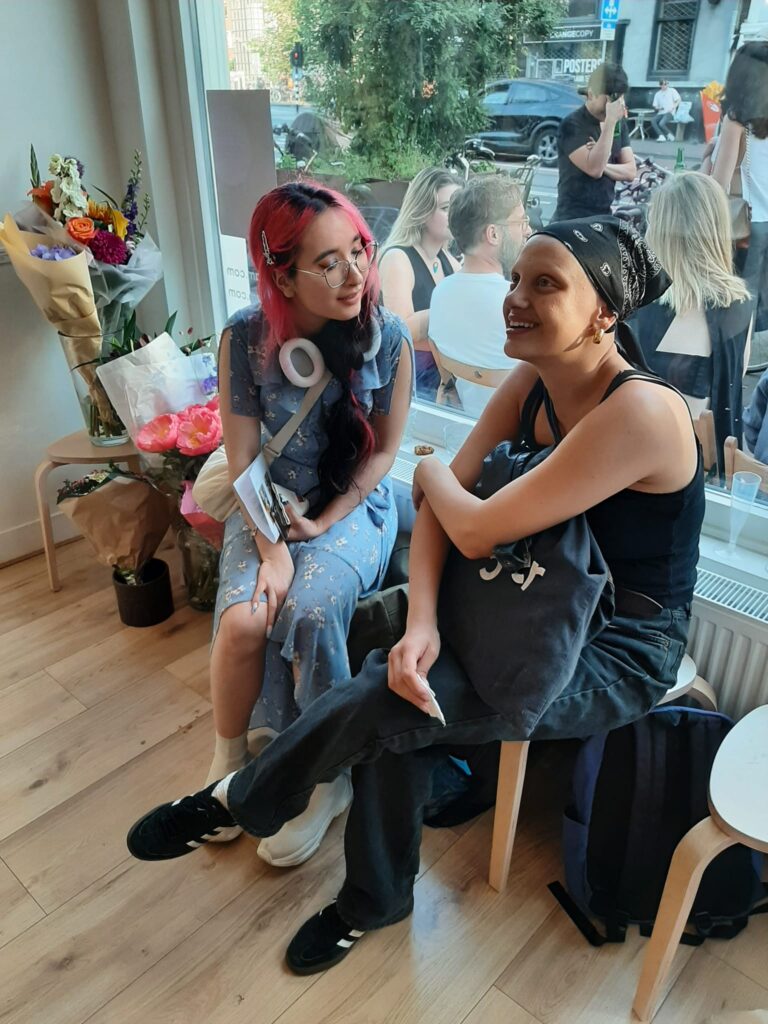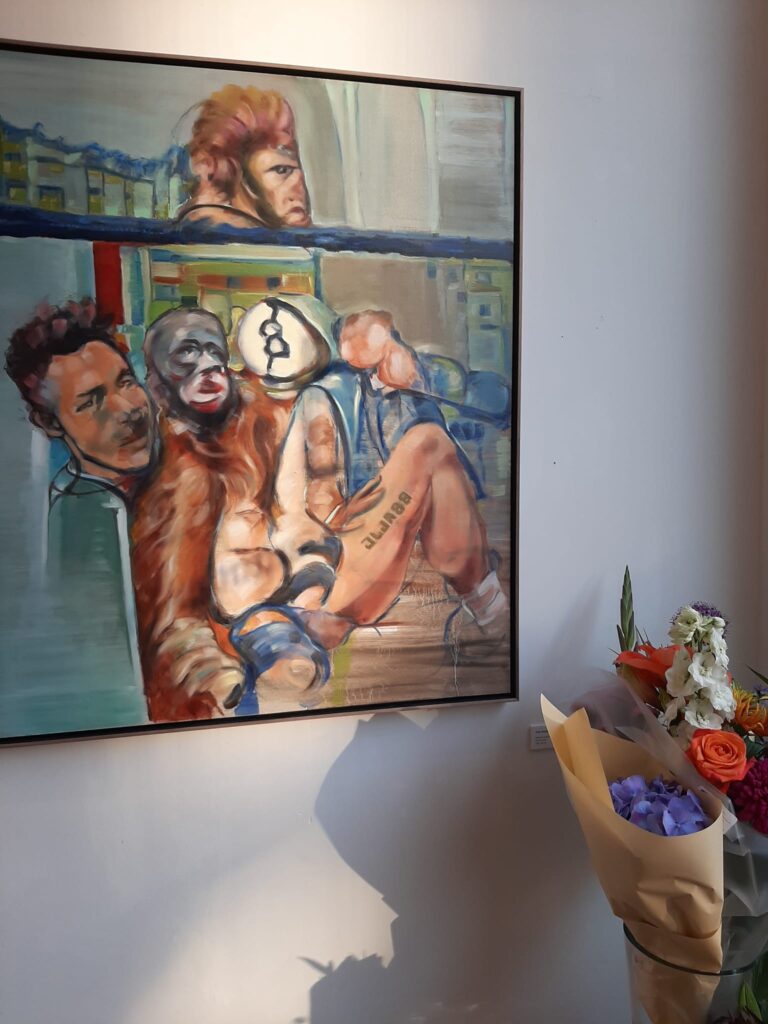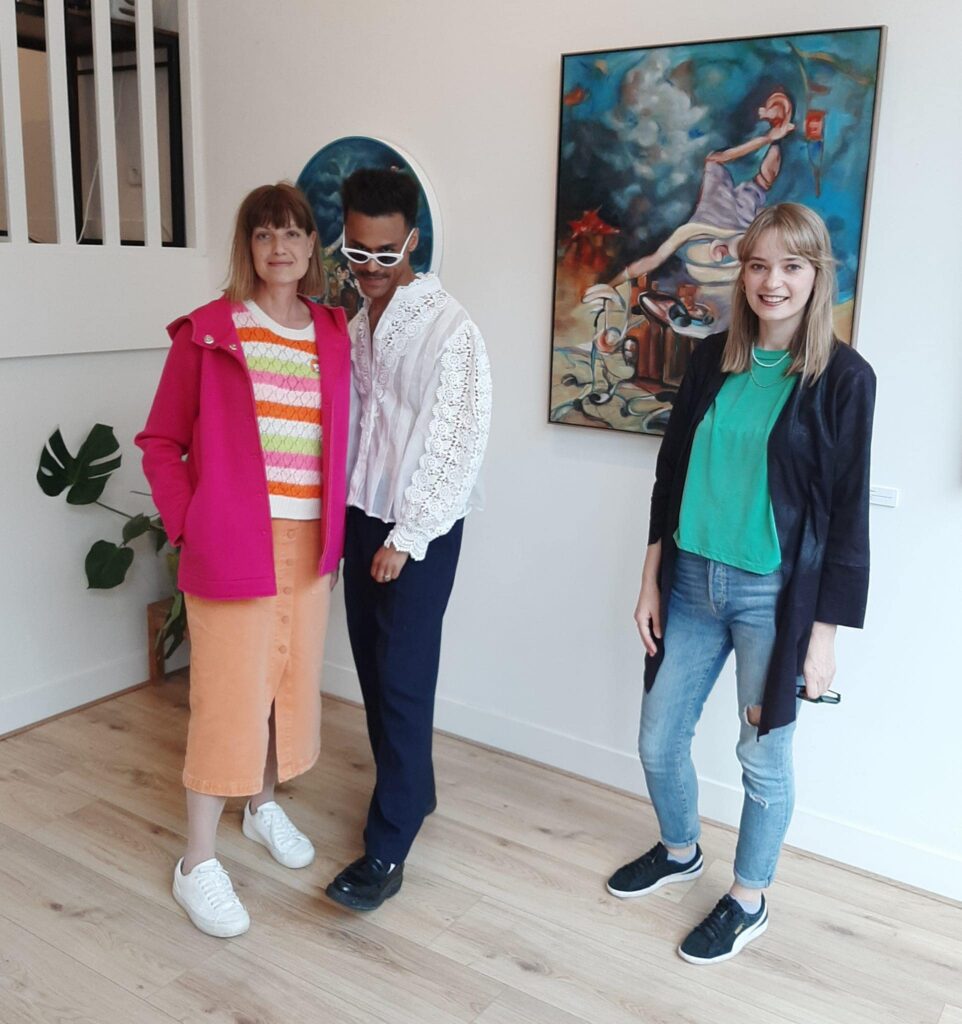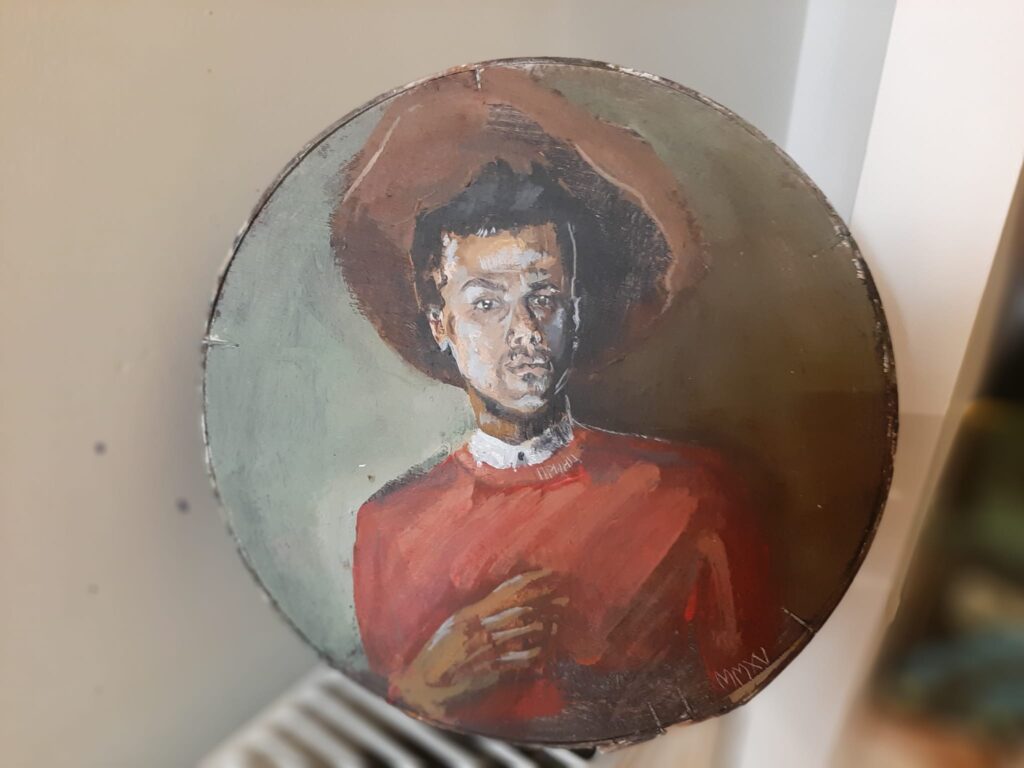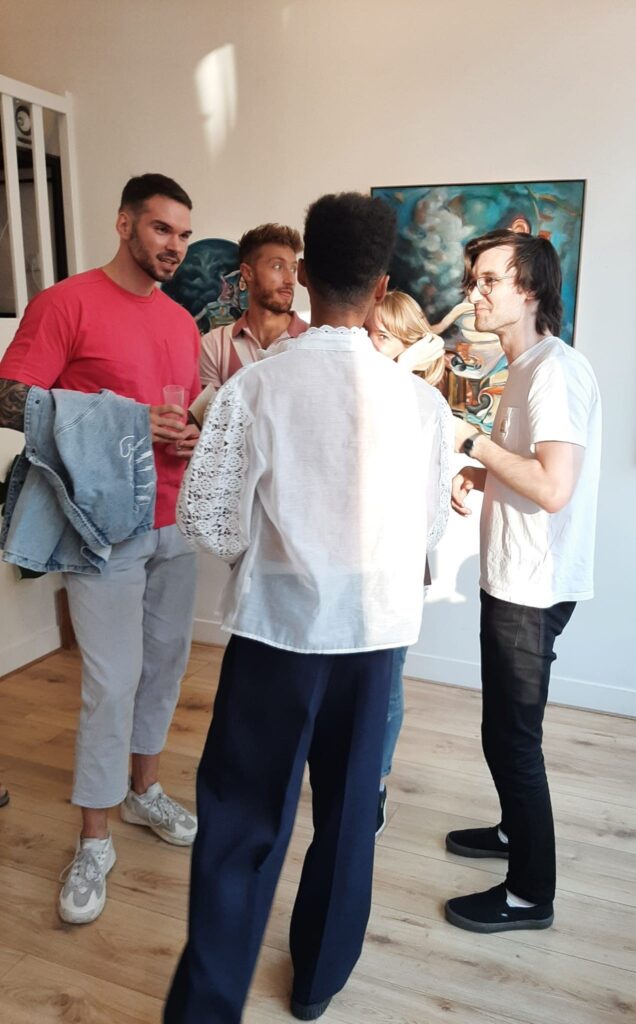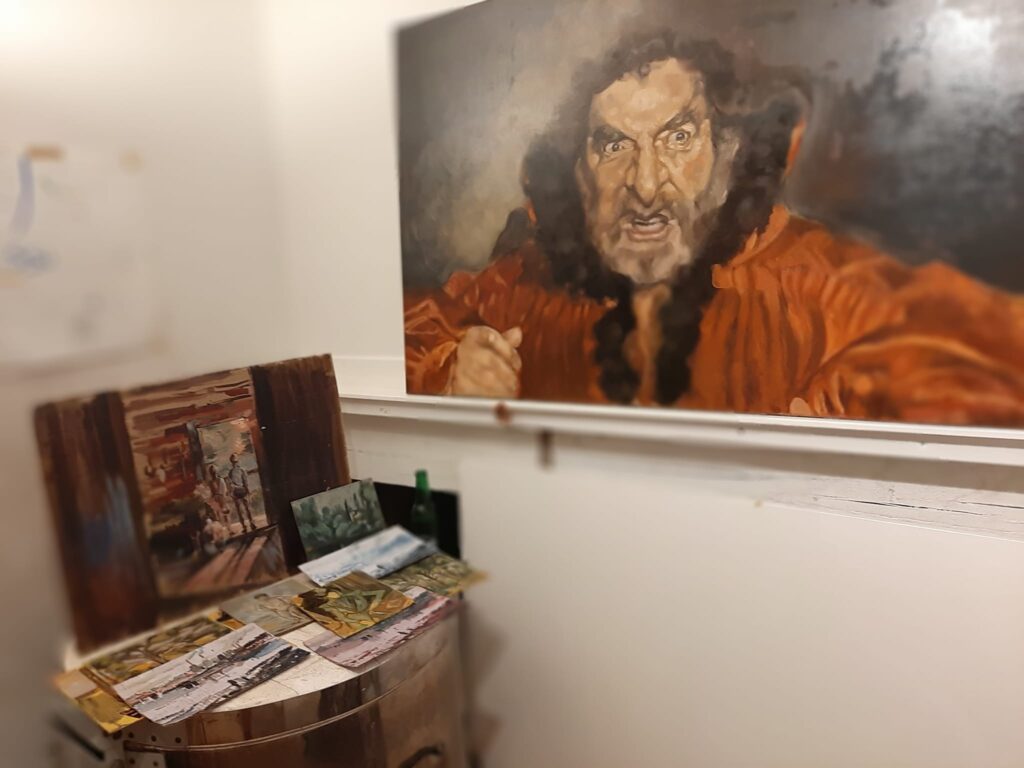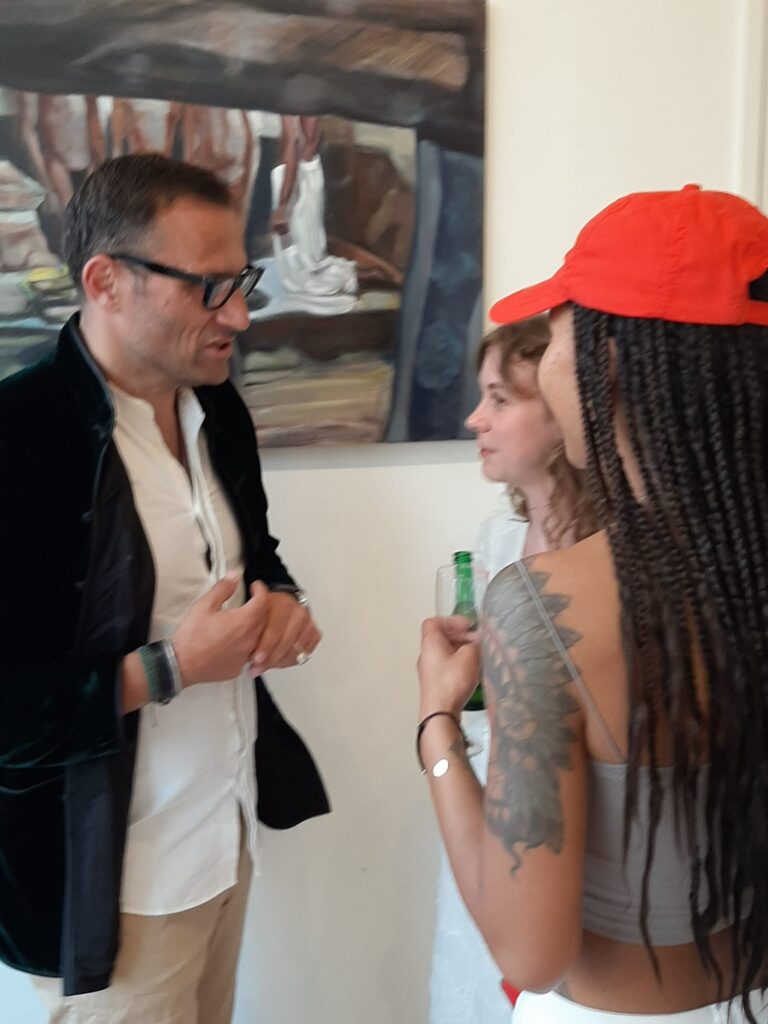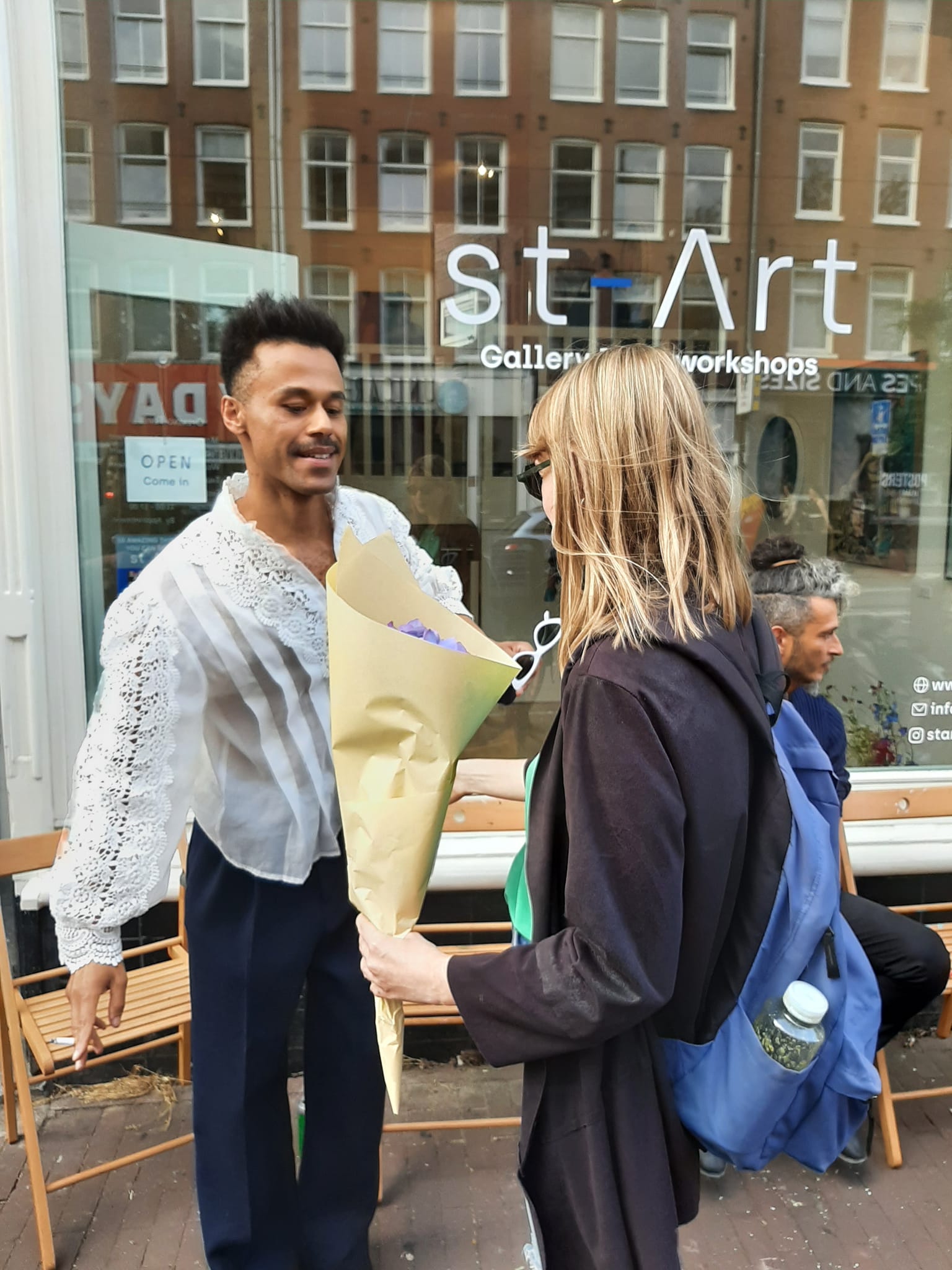On this sunny May Sunday, Amsterdam was bathed in sunlight, spilling over the edges of its beautiful canals, beloved by tourists and Amsterdammers alike. The city welcomed its newest citizen, Prins Nicolas. He wasn’t born in a hospital. Nicolas was born in a metaphorical dimension as an Amsterdam artist, whose first solo exhibition took place in this city of great artists. Amsterdam embraced the boy born in Moscow on the same day, May 18, 1987, as one of its own. In a snow-white shirt with lace reminiscent of the canvases of Dutch Golden Age painters, Nicolas celebrated his birthday with his first solo exhibition, attended by numerous new friends.
Just 2 years ago, in the post-pandemic year, the artist embarked on an art residency in Amsterdam from Antwerp, where he had lived since he was 16. We, his friends, suspected that he would stay in this most free-spirited of European cities – the vibe of his creativity and life so harmonious with the city on the Amstel with its museums, galleries, and dynamic art scene.
Nicolas not only met many new friends but also found his gallery and his gallerist. Carlo Tozzi named it as if specifically for our hero – “st-Art” (start of new talents). You might say that A.S. Pushkin had already completed his journey by 37. But our time shifts the age boundaries. Prins Nicolas received several diplomas in Belgium – one of them from the LUCA School of Arts Brussels. An artist, curator, educator, he found himself in Amsterdam.
Life applied various layers to the canvas of his destiny – countries, identities, experiments. I have always been amazed at how Nicolas walks his decidedly non-simple path in life with a soft smile. He also applies multiple layers of oil paint to the canvas, achieving the effect of interpenetration of images and meanings.
The owner of the “st-Art” gallery, Carlo Tozzi, likened Nicolas to Diogenes, which at first seemed unusual to me, but then I found a rational kernel in it:
“The reason why his approach to art reminds me of Diogenes, the ancient Greek philosopher who was known for his quest for truth and authenticity, is because, like Diogenes, who carried a lamp in the daytime, claiming to be looking for an honest man, Prince’s art is a search for his true self, a journey of self-discovery and self-acceptance.
Prince’s artwork is an emotional reflection of the people and places he has loved and lost. Each piece is a narrative, telling a story of craving, loss, and the relentless pursuit of acceptance. His work is a testament to his strength and resilience, his ability to transform personal loss into a universal experience of human vulnerability and resilience.”
